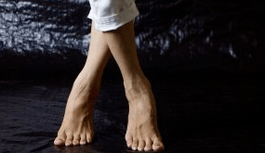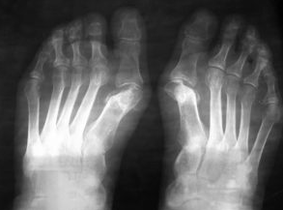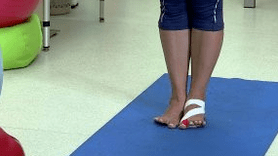The surgical treatment of valgus deformation is seen as an effective therapy method.This disease is characterized by a pathological change in the shape of the foot, which must be restored.Otherwise, complications are possible up to the disability.The operation is usually carried out in 3-4 pathological stages.

Operation as an effective treatment method valgus
Development factors
The valgus deformation of the foot is difficult to determine in the first stages due to asymptomatic.Ballerin's, women who prefer to wear the highest stallions, people of advanced age are in the formation of such a pathology.Such reasons for the formation of the valgus foot are differentiated:
- Diseases of the endocrine system;
- flat feet;
- Violation of the band apparatus;
- Limited injuries;
- Inheritance.
Depending on the degree of lesion, this disease is divided into such development stages:
- The first finger is moved less than 20 degrees while the patient does not feel uncomfortable.
- The connection is shifted by 30 degrees.The pain manifests itself after the stress.
- Expulsion of 30 to 50 degrees.Pain sensations of constant nature that does not allow to move normally.
- The joint shifts by more than 50 degrees.Strong deformation of the foot and acute pain.
The valgus deformation can be innate or acquired in children.This disease develops against the background of pathologies of the musculoskeletal system.The first signs appear when the child begins to run.
What is Valgus dangerous?
During the development of such a pathology, a sick person is confronted with the problem of choosing shoes, since the plump bones filled with serious symptoms and pain when touched.In addition to aesthetic modifications, the valgus deformation influences such structures on the foot as ligaments, tendons, bones and connections.In addition to valgus, the feet for the development of such pathologies of the musculoskeletal system are dangerous:
- Deformation arthrosis;
- In chronic form bursit;
- Longitudinal transverse flat feet;
- The growth of bone customer-like structures;
- Complete shift of the plus bone.
Indications for operation in the Valgus foot

The non -operative treatment for the valgus deformation is only carried out by the child until the foot is fully formed.The main indicators for intervention are pain, complaints, limited motor activity, inflammatory processes, infections, strong visual changes and gang injuries.The flat-valgus foot is only treated surgically.Other methods - gymnastics, orthopedic shoes, the development of pathology.But in 3-4 stadiums in a conservative way so as not to solve the problem.At this stage, the finger deviates 25-35 degrees, and the plus bone drops by 18 degrees, which is deformed by the rest of the phalanges.
Types and characteristics of Providence
The selection of a certain type of operation is carried out individually depending on the degree of development of the pathology, the condition of the patient and the associated diseases of the musculoskeletal system system.Such types of surgical interventions are used more often:
- Osteotomy.They are reconstructions.A small incision is produced through which the lateatar sophangal connection is carried out.Then the elimination of bone growth is carried out.Removing the bone is carried out on the immobilized joint.The osteotomy is carried out with the subsequent consolidation of bone fragments using the compression institution.Differentiate the following subspecies: Austin with V or L-shaped degrees that is used for a display of 17 °;Schal with a Z-shaped 17-40 ° deviation;Akin (Wedge -Shaped) - combined with other methods.
- A small invasive intervention is a savings technique.Strokes are made on both sides of the thumb.The surgeon introduces micro tools and restores the correct position of the axis of the first finger.The action is controlled by the monitor.This type of operation is carried out by children if traditional treatment methods have not achieved any results.
- Arthrodesis is a radical method.Deformation and pain are eliminated, but the connection becomes motionless.The lack of mobility has no influence on the course of a person.The remaining fragments are connected by screws, which are then removed.

Correcting the position of the bone is a complex operation.Immediately after surgical manipulations, the specialist recommends bed rest.The swelling of soft tissues is removed with cold compresses.The first 6 weeks of walking are only possible in orthosis, which removes an additional load from the limb.Restoration of ordinary motor activity - after 1.5 months.Rehabilitation takes about six months.The postoperative period (10 days) The patient is in the hospital under the supervision of doctors.In order to accelerate the restoration process, the link operated is important to stay in the lying position above the body.Rehabilitation includes massage courses, electrophoresis, training therapy and UVT.
Complications
Surgical interventions of such a plan are mainly tolerated at any age.But there are unwanted complications.This includes:
- The formation of thrombosis;
- Infectious infections of the body;
- Aseptic necrosis;
- Restriction of the motor amplitude of the thumb;
- Injuries to nerve endings;
- allergic manifestations;
- Paresthesia of the fingers.
Forecasts after the operation
If the intervention is carried out on both feet, it is important to take a break of 3-6 months.
If you follow the doctor's recommendations, the forecasts are favorable.Do not charge the operated limb with strong physical exertion.After the operation, you have to wear orthopedic shoes or special insoles.It is better for women to give up high heels and dense shoes.Thanks to the modern methods in the area of the operation, Valgus is exposed to a complete correction.

























